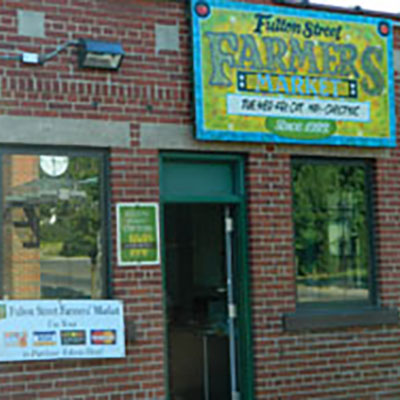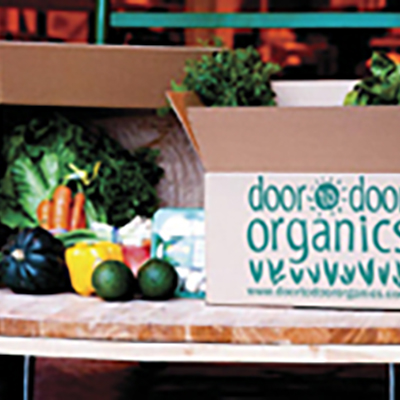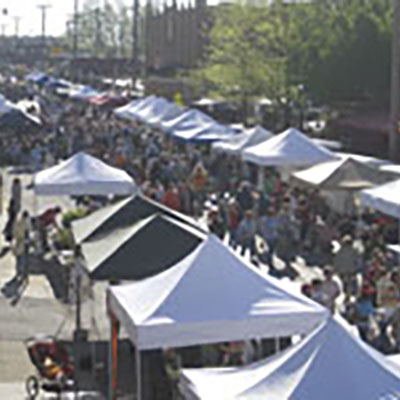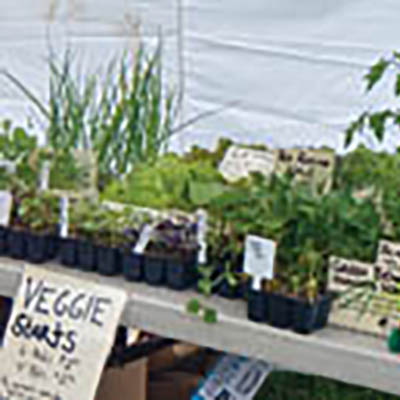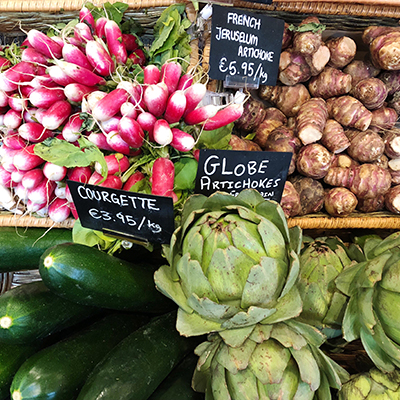Flexibility and convenience for farmer and customer
Orignially published November 1, 2019
I started my farm in 2010, and in 2011 I reluctantly started a CSA program. I’d worked for CSA farms for years, and honestly didn’t love the model. I’ve always been a farmers market devotee, and that’s where my heart is. But I had customers clamoring for a subscription option, so I decided to go for it.
We offered a classic CSA model, with shares chosen and packed by the farmer and picked up by members weekly throughout the growing season. For the first several years, we sold out almost instantly, sometimes within 24 hours (yes it was small). But in the last few years we’ve seen enthusiasm decline, retention drop, and registrations slow down. We were barely reaching our 60-member target.
I find it stressful to live up to the expectations of my CSA. Whether or not it’s true, I believe that my members expect flexibility, convenience, variety, and a discount in what is really a premium service. It takes a lot of work to craft, harvest, pack, and deliver a CSA share. We send out weekly notes and recipes, handle everyone’s cancellations and vacation schedules, and try to keep people happy with what they get.
But I’ve stuck with it, since there’s also a lot to love. Overall, my members are incredibly appreciative and critical to sustaining the farm. CSA members use more produce than all except my most committed market customers, and they are usually the first to support any new enterprises or ideas on the farm. I’ve tried to eliminate the most stressful aspects of the CSA to make it easier on me, but I’ve still never been totally happy with it.
A couple of years ago my brother moved to Providence, Rhode Island, and I went with him to his local winter farmers market. One farm, Freedom Food Farm from Raynham, Massachusetts, caught my eye with their beautiful market stand and high-quality produce, so I looked at their CSA information. It fit neatly on one page and was incredibly simple. Members signed up and then came to the farm or its markets and picked out 10 items each week. End of story. I was inspired.
We decided to try it, with a few variations. In 2018 we offered the “CSA flex” as a part time option, in addition to our “classic CSA”. It was a hit, so in 2019 we added a full-time option. We currently have 25 flex members and have cut our classic CSA down to 40 members. I am mightily tempted to drop it altogether! Perhaps “CSA flex” would be a good fit for your farm.
How it works
Members begin to sign up when we open registration in February, selecting between the different CSA options. We operate our registration as an online store, with each share type getting its own product page and drop-down menus for different variations. We offer up-front payment or installment options for both classic and all but the smallest flex shares.
Members pick the number of weeks and the share size they want (half shares get six items; full shares get ten) and pay their deposit. We set a start date and end date, just like with the classic CSA. Once the season begins, they can visit us any time we are open.
We keep a check list, like a punch card, for each member in our market binder and mark off each visit. We allow members to use more than one share at once or visit any stand they like, but we don’t allow them to split a share over multiple visits (eg, 3 items Tuesday and 3 items Saturday). Freedom Food Farm, my original inspiration for this model, has members pick one market that they will attend for their CSA and select one share per week.
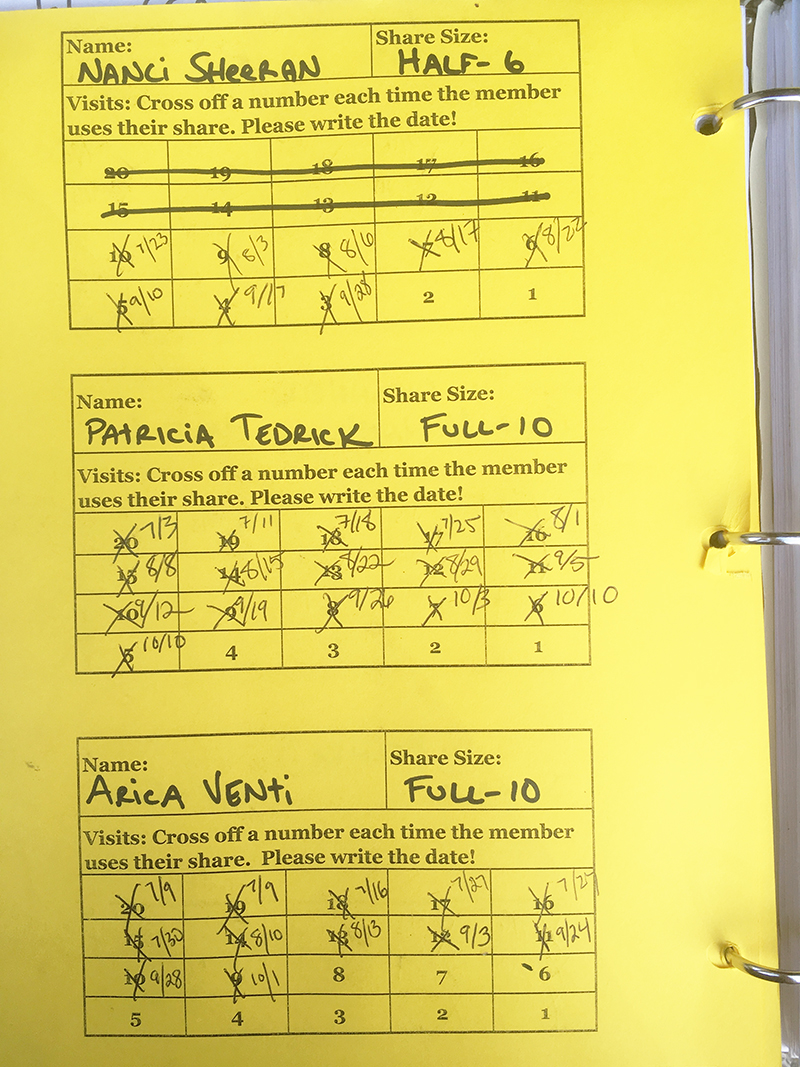 This is the sheet of “punch cards” the author keeps in her market binder. As the members use their shares, they are crossed off and the date is recorded. The first person only signed up for a half time (10 week) share, so half the visits were crossed off before the season even started. All photos courtesy of the author.
This is the sheet of “punch cards” the author keeps in her market binder. As the members use their shares, they are crossed off and the date is recorded. The first person only signed up for a half time (10 week) share, so half the visits were crossed off before the season even started. All photos courtesy of the author.
An item varies from week to week: it could be a bunch of carrots, a pound of potatoes, or a head of cauliflower. Mostly it’s self-explanatory, but it can get confusing with bulk items. We let people take whatever they want: if they want 5 boxes of peas, that’s just fine. Some people are price conscious and try to get the best deal they can, but I find that most people just take what they like and it all evens out. With a few expensive items, like flower bouquets, I “charge” 2 or 3 items.
To figure out what to charge for flex, I initially priced out several sample shares and determined an average price per item. I then multiplied it out, giving discounts for folks who sign up for larger shares. In my experience full shares average a lower cost per item, since people are more likely to take some cheaper things along with their salad mix and peas. This is part of why I don’t let people split shares: they are more likely to just take high value items each time and the pricing wouldn’t work. I’ve also found that not everyone uses all their visits, so I’m able to drop the price for everybody to make up for missed shares.
Why flex
Simply put, from the farm’s end, it transfers much of the work of CSA to the customer. They become responsible for getting to the market, picking out something they’ll like, and packing it up. Much like any other subscription program, they are responsible for actually using and getting value out of it.
And we’ve found that members love it! Many say that picking out their share is like a game. It feels like free produce, since they have already paid for it and now get to pick whatever they want. Nobody gets anything they don’t like, a common complaint with the classic CSA model.
People don’t have to schedule with me or find someone to pick up their share if they are out of town, and they can come to whichever market is convenient for them on a given week. And members still get the benefits of connecting to a farm, eating seasonally, and committing to a healthy diet.
Flex is cheaper for me to operate than the classic CSA. Since I already attend the farmers market, those costs are fixed. But with all the additional flex members this year, we’ve moved a lot more produce off the booth, making the market more profitable overall. It’s simpler to set up, simpler to track, and far less communication with members. We aren’t paying for CSA containers or time spent packing and delivering shares.

On my farm, flex has answered customer demand for more options and customization. With the classic CSA model, I find it to be a nightmare to track part time shares or custom orders. With flex, people just choose how much CSA they want up front and are responsible for following through on their choices. It’s a simple matter for me to write in how many items they get and include the right number of visits on their punch card, and since we help each member individually at the market there are few mistakes.
flex depends on having a robust farmers market (or farm stand) presence to begin with. I don’t think I could have pulled it off in the first several years of the farm, since we sold out of just about everything by the end of every market. But if you find that you are usually packing up leftovers or have extra produce you could bring to market if you had more customers, flex might work for you.
Is flex really CSA?
We advertise flex as a market-based CSA, and I believe that it fulfills the intent and purpose of a CSA. Members pay at least part of the share up front, are restricted to using what we have available, and are committed to supporting our farm throughout the season. The pre-set number of items encourages people to branch out and try new things, but they have more control over how much they step out of their comfort zone. This also reduces food waste, which I have found to be one of the biggest problems for classic CSA members.
Like in the classic CSA model, flex members share the bounty and share the risk. When our selection is more limited at the ends of the season, they have to get creative to make it work. During the peak of the season they get to enjoy the bounty of the farm and indulge all their summer favorites. And in the market format, we’ve actually found ourselves connecting more with each member, since we see what they choose from week to week and talk to them about what’s new on the farm.
I feel the same level of commitment to my flex members that I do with my classic CSA members, as well as some of the stress. The first few weeks of the CSA season this year we were light on produce, and I decided to set aside some of the choice items at market for flex members. We let them select a few items from the “reserve” pile and the rest of their share from the main table. It did anger a few market customers, but as the flex members had committed to us, prepaid, and waited for the CSA to start, I felt obligated to ensure they got a nice selection.
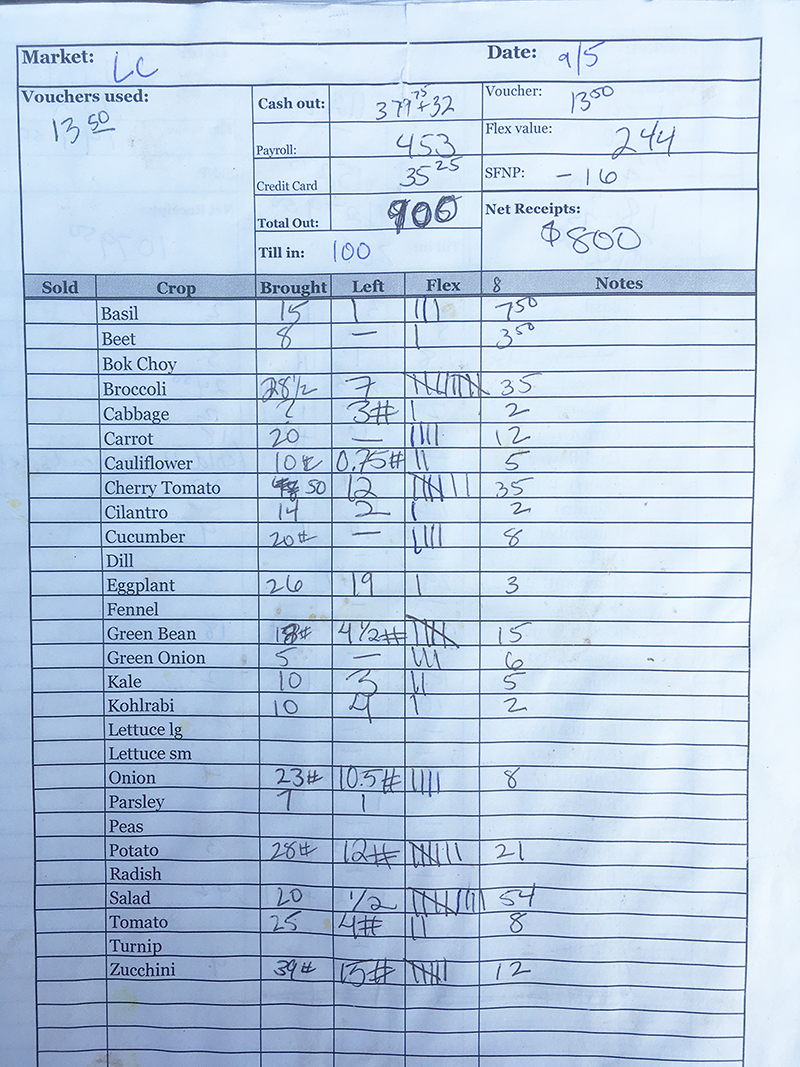 This is the author’s market sheet showing how she records flex use. The number of each item taken to market is recorded, how many are left at the end of the market, and how many were taken as part of the flex CSA.
This is the author’s market sheet showing how she records flex use. The number of each item taken to market is recorded, how many are left at the end of the market, and how many were taken as part of the flex CSA.
The down side
Flex has been a great option for my farm and my members, but of course there are drawbacks. If you hate going to farmers markets, it’s probably not for you!
Since I never know how many people are going to use their flex share on a given week, it can be hard to plan perfectly for them. When we are short on popular things, we sometimes let members down, and that’s always disappointing.
One goal of flex is to increase total sales and move more produce. But sometimes flex reduces my gross market receipts, particularly at the ends of the season. When produce is scarcer, flex members take a higher percentage of what I bring and there isn’t always enough left to meet the regular market demand. For me, the spring payments have made up for the reduced cash flow. And overall, flex has greatly increased the amount of produce moving off our market stands and our total sales.
While the convenience of flex is an advantage, the added responsibility for the customer can backfire. People have to show up during the hours that we are open, and if they miss it, they are out of luck. If they come late in the day, they usually have a more limited selection and produce is not at its most prime.
I like the fact that with our prepacked classic CSA, every member gets the same things in the same condition whether they come early or late in the pickup window. However, we’ve had plenty of people miss pickups on classic CSA, and it drives me nuts to have to decide between tracking down members or dealing with their unclaimed produce. I have found a lot of relief in shifting those responsibilities to the customer, and since we offer part-time flex options, I feel that it’s truly on them to make it all work.
One of the other advantages of classic over flex is how much it encourages people to try new things and branch out. I find that members who really like the classic share like being pushed to eat things they wouldn’t always pick out on their own. People also use it to jump start a healthy lifestyle, since having a share ready and waiting for you each week pushes you to eat it all up.
Flex can fill those needs, but it takes extra motivation on the members’ part to do so. The preset number of items helps encourage people to try new things. But I find that most people, left with one or two more items to choose, get more of something they already picked out.
The biggest challenge I’ve had with flex is at the end of the season. Most members miss at least a week or two during the summer, and some don’t even come close to using everything they signed up for. Both years we’ve offered flex, this has resulted in people bunching up their shares in the fall, when our yields and selection are starting to drop off.
So I changed the language I use with customers to encourage them to use their shares more evenly, calling them “half-time,” “3/4 time,” and “full-time,” and I sent a few communications throughout the season to remind people about the season’s length and using up their shares. But people are on their own schedules and there’s only so much you can do.
Knowing about the end of season crunch, in the future I will try to plan for extra storage crops or fall greenhouse rotations to accommodate it. Another option would be putting more restrictions around when people can use their shares (eg, once every week, or five in July, five in August, etc), or limiting how many shares can be used at a time. But I like the simplicity both for me and my customers. Next year I may reduce the number of visits members can sign up for to reflect what people actually used this year.
Tracking
I find it helpful to track what produce goes to flex, both for better recordkeeping and for future pricing. Fortunately, we’ve found some simple systems that integrate well with what we already do to make it easy.
When going to market, I always fill out a take sheet with columns for how much we brought and how much was left. I added a 3rd column for flex, and we tally the items in this column as members take them. At the end of the day, I add up the value and record it next to the market take. My staff find it easy to use; instead of adding up a customer’s total they just put a mark on the sheet. To track each member’s shares, we cross off and date the visit on the member’s individual punch card.
Using the take sheet also makes weekly planning a cinch. Since flex comes out of the market haul, I simply plan for a bigger market. I can look at how many cherry tomatoes moved at the Thursday market last week and plan accordingly for this week; it doesn’t matter which customer took them home. I also don’t have to separate out my harvest, pulling 39 heads of lettuce for Tuesday’s CSA shares and 18 for Thursday’s. It makes life in the packout much simpler.
I track my harvests as well as farm income through my accounting program. I record market sales by invoicing the market for everything sold. I created an item in my accounting program for “flex shares used,” and enter it on the invoice as a negative number.
That way the actual market receipts are correct, I can track how much we harvest of each crop, and I have good records of how much value went into flex on a given day, at each market location, and for the season overall. I can use that information to more accurately price flex in future years. I haven’t found it necessary to track how much of which crop went to flex as opposed to market customers, just the total value.
CSA fills a few important roles on my farm. It provides a significant cash flow in the spring, provides a reliable and steady outlet for produce during the peak season, and keeps that demand going into fall when my markets typically slow down. Flex checks all the boxes. If this sounds good to you, I encourage you to give it a try!
Carolina Lees started Corvus Landing Farm in 2010 at the Oregon coast. She and her crew farm two acres of vegetables, providing for the small communities surrounding the farm through farmers markets and a 60-member CSA.
.png)

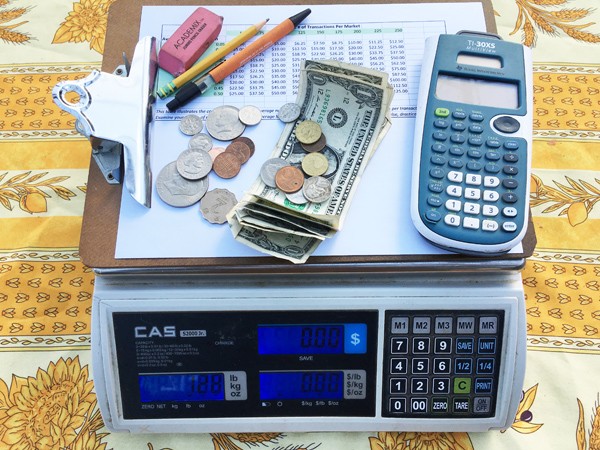 Rounding is a pricing strategy whereby smaller denominations are excluded from the grand total at checkout. That means pennies, nickels and dimes. The principal incentive for rounding at the farmers market is to expedite the checkout process.
Rounding is a pricing strategy whereby smaller denominations are excluded from the grand total at checkout. That means pennies, nickels and dimes. The principal incentive for rounding at the farmers market is to expedite the checkout process. 